 James Drewe is Vice-Chairman of the Longfei Taijiquan Association, a member of the British Council for Chinese Martial Arts (BCCMA), and is a registered instructor with the Tai Chi Union for Great Britain (TCUGB). He currently teaches Yang, Chen, Sun, and Wudang styles of taiji, including various sword and fan forms, and is the author of Taiji Jian 32-Posture Sword Form, published by Singing Dragon.
James Drewe is Vice-Chairman of the Longfei Taijiquan Association, a member of the British Council for Chinese Martial Arts (BCCMA), and is a registered instructor with the Tai Chi Union for Great Britain (TCUGB). He currently teaches Yang, Chen, Sun, and Wudang styles of taiji, including various sword and fan forms, and is the author of Taiji Jian 32-Posture Sword Form, published by Singing Dragon.
Here he answers some questions about his new book, The Yang Tàijí 24-Step Short Form: A Step-by-Step Guide for all Levels.
How did you come to practice Tai Chi?
Back in 1975, I was running back home because I was late for something, and banged into a guy who was coming out of a betting shop. He’d obviously lost rather badly, because he ran after me. When I slowed down for a breather he caught up with me, grabbed me by the front of my shirt collar, and was probably only stopped from thrashing the daylights out of me because I turned into a gibbering wreck. I decided that I didn’t like how that felt and should therefore do something about it.
Within a few weeks of this meeting with the unsuccessful gambler, I took up Kung Fu, which I ended up doing for 5 years. There was a t’ai chi class that followed after the Kung Fu, and I joined this the next term as well.
I didn’t do the 24-Step until many years later. I was very impressed by its succinctness and by its clarity. I was teaching the Yang Long Form at this point, and realised that the 24-Step was a much more approachable form for beginners.
Why did you decide to write this book, and who is it for?
I wrote the book because I enjoy teaching, I enjoy trying to describe how to move, and from a more practical point of view, because I’m always being asked to recommend a book for the 24-Step.
The book is for several levels, and is divided into a ‘Brief’ description, a ‘Detailed’ description, and there are then ‘Notes’ at the end of every movement.
A beginner will possibly find the ‘Brief’ the most useful – this acts as a reminder only of the movements.
As you might expect, the ‘Detailed’ goes into slightly greater depth, explaining the coordination of the movements, angles of the limbs and body, etc.
The ‘Notes’ are more advanced points, often showing variations (not everyone teaches it exactly the same), and explaining how the body functions within each movement – rotations of elbows, knees, connections between the joints, the opening and closing of the limbs and torso, rotations of the centre to produce the movements effortlessly, etc.
Who is the ‘modern tai chi student’, and how does your book cater to them?
The ‘modern’ tai chi student is the person who is trying to cram a thousand things into his/her week, whilst holding down a job, and possibly a relationship/family.
The longer forms take up to 20/25 minutes to perform, and many years to learn, so the 24-Step form is great for those with less time to spare, but who would still like to do some t’ai chi.
The book caters for them because it explains the movements, and hopefully will serve as a reminder after learning the moves in a class.
Grounding, posture, balance, etc. – which areas usually require the most practice and attention for new and for experienced practitioners of the Yang Tàijí 24-Step Short Form?
This is a very difficult question, because everyone is different. Some people are naturally well-grounded, others have a natural grace of movement, others could balance on one toe if necessary, some are tense, others relaxed.
For beginners, the most common problem is coordination of the arms and legs with the torso – for example, a movement may require the left foot (which is already placed ahead of you) to move back alongside the right foot, at the same time as the body turning to the right, the right arm bending at the elbow, whilst the left arm pushes down towards the floor. Beginners find this difficult.
More experienced practitioners may well be able to manage the limbs successfully, but find that making the movements come from the centre is particularly difficult; many experienced practitioners are ‘disconnected’, in that their joints do not operate in a coordinated way with the rising and falling, turning left and right, and opening and closing of the centre.
This book tries to covers all of these aspects as far as it is possible with words. What is particularly hard to explain with words is the feeling of the various movements; I have tried to do this by using analogies, but am aware that this very much depends on the reader. For example, if I use sailing as an example, this might not work very well for those who haven’t had the experience of using the wind to move a small boat; on the other hand, some people have vivid imaginations, so….maybe it will help!
What do you mean when you say that thai chi is “Understanding the Absolute by practising in the Relative”?
For me this is what t’ai chi is about. If everything in the world is a microcosm, then ‘life’ should reflect Divinity, and anything that happens in our lives (any skills that we learn, all interactions, etc.) should reflect Divinity and ‘life’. Therefore, t’ai chi should be able to explain 1) Divinity, and 2) how the structure of ‘life’ operates (although, these are probably the same, as it’s arguable that ‘life’ is ‘Divinity’ in process), and how best to function within this structure of ‘life’.
It is said that we live in a world that is ‘relative’; everything is relative to something else (i.e. we have yin and yang – up/down, left/right, deep/shallow, yesterday/tomorrow, etc., etc. …the list is endless), and that, in order for us to be able to experience, this is the way that it has to be. In other words, without those opposites, experience is impossible.
It is also said that, in a state after death, we cease to experience in the same way – time no longer exists, and neither does up/down, in/out, forward/backward etc. We are just in a state of ‘being’ – the ‘Absolute’.
So, to understand the ‘Absolute’ (God/Heaven), you need to study the ‘Relative’ (Earth), and in order to understand both Heaven and Earth (i.e. the way that God ‘functions’ and the way that ‘life’ operates), you can study t’ai chi because it is a microcosm.
Having said that, I think you can probably study absolutely anything and come to the same conclusions. Mine just happens to be t’ai chi, and writing music!
In the book you talk about different kinds of teachers. What kind of teacher do you aspire to be?
I’m not a performer, and in fact have absolutely no desire to be one; but I would like to be a good teacher. I trained as a teacher (class music) in the 70s, then taught music in schools for 11 years, and very much enjoyed the challenge of explaining, and trying to understand the way in which individuals learn. Whether it is music or t’ai chi, the challenge remains the same; different people have had different experiences, and therefore will learn in different ways. Trying to find the right way of explaining something is like searching through a bunch of keys to find the right key for the lock. Hopefully the book will help some people!
Copyright © Singing Dragon 2010.
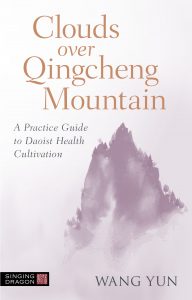 Mount Qingcheng, one of China’s mystical mountains, has been the birth place of discovery, realization and preservation of the recipes that stimulate the deep potential of the human body for generations. Clouds Over Qingcheng Mountain, the follow-up book to Climbing the Steps to Qingcheng Mountain by Daoist master Wang Yun, simplifies the complex practices of Daoism handed down by generations of accomplished Masters – such as posting, breath practice and meditation – and gifts the reader with its most valuable aspects for a modern world.
Mount Qingcheng, one of China’s mystical mountains, has been the birth place of discovery, realization and preservation of the recipes that stimulate the deep potential of the human body for generations. Clouds Over Qingcheng Mountain, the follow-up book to Climbing the Steps to Qingcheng Mountain by Daoist master Wang Yun, simplifies the complex practices of Daoism handed down by generations of accomplished Masters – such as posting, breath practice and meditation – and gifts the reader with its most valuable aspects for a modern world.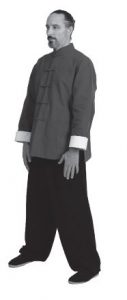 Posting relaxation exercises
Posting relaxation exercises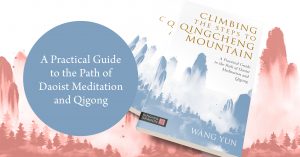
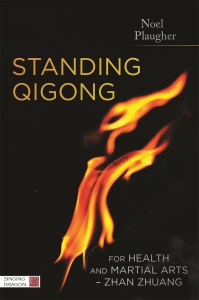
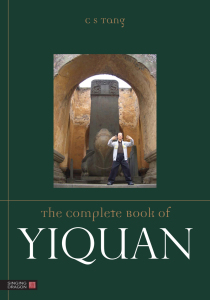
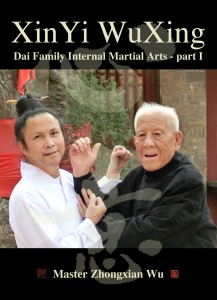
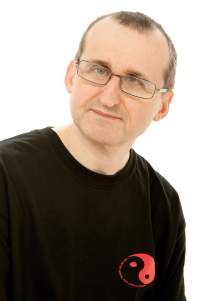 Michael Davies
Michael Davies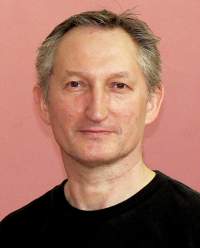
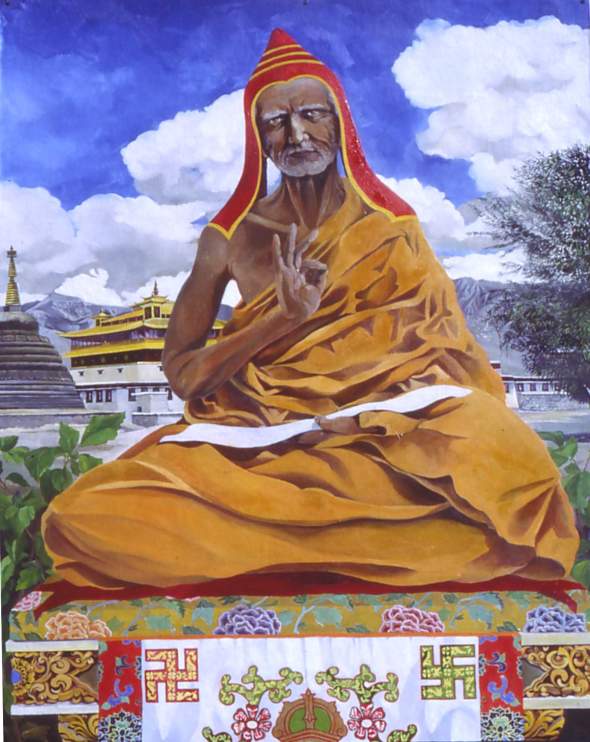
 James Drewe
James Drewe